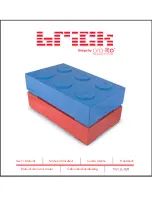
DL4300 Appliance
Understanding Rapid Snap for Virtual
227
Understanding Rapid Snap for Virtual
By installing the Rapid Recovery Agent software, you can protect physical or virtual machines on the Rapid
Recovery Core. The supported operating systems are indicated in system requirements in the topic Rapid
Recovery Agent software requirements.
Rapid Recovery now offers another approach for protecting machines.
The Rapid Snap for Virtual feature — also known as agentless protection — of Rapid Recovery lets you protect
virtual machines (VMs) on a VMware ESXi or Hyper-V host without installing the Rapid Recovery Agent on every
VM.
CAUTION:
Dell recommends that you limit agentless protection to no more than 200 VMs at once.
For example, do not select more than 200 VMs when using the Protect Multiple Machines Wizard.
Protecting more than 200 VMs results in slow performance. There is no limit to how many VMs a Core
can agentlessly protect over time. For example, you could protect 200 VMs today and another 200 VMs
tomorrow.
Protecting vCenter/ESXi VMs
Rapid Recovery lets you protect vCenter/ESXi VMs without installing the Rapid Recovery Agent on the VM or
ESXi host, achieving agentless protection. To protect an ESXi environment, the Rapid Recovery Core works with
the snapshot technology native to VMware.
Rapid Recovery agentless protection uses the ESXi client and the existing application program interface (API)
to protect selected VMs on a single host without installing Rapid Recovery Agent software. The Rapid Recovery
Core then communicates with the virtual machine disk (VMDK) to determine the necessary details of the
protected volumes. Because Rapid Recovery creates recovery points based on volumes, not VMDKs, each
volume can be separately mounted, restored, and exported.
NOTE:
Rapid Recovery recommends that VMware Tools be installed on virtual machines (VMs) you
want to protect on vSphere or ESXi hosts. When VMware Tools are installed on a VM using a Windows
operating system (OS), the backups that the Rapid Recovery Core captures use Microsoft Volume Shadow
Services (VSS). For information on the behavior of agentless VMs with or without VMware Tools, see
Benefits of installing VMware Tools for agentless protection
Agentless protection also uses VMware Changed Block Tracking (CBT) to reduce the time needed for incremental
snapshots. CBT determines which blocks changed in the VMDK file, letting Rapid Recovery back up only the
portions of the disk that have changed since the last snapshot. This backup method often results in shorter
backup operations and reduced resource consumption on network and storage elements.
There are multiple benefits to using agentless protection. Some of the most useful attributes include the following
characteristics:
•
No additional software is required on the host machine.
•
Agentless protection lets you opt to automatically protect new VMs added to the ESXi host.
•
A restart is not required during the protection process.
•
Credentials are not required for each individual VM.
•
Agentless protection lets you protect a VM even if it is powered off.
•
Agentless protection lets you restore to disks.
•
Agentless protection does not require free space on a volume during transfers.
•
Agentless protection supports all guest operating systems.
•
Agentless protection lets you export dynamic disks or volumes.
NOTE:
If dynamic volumes are complex (striped, mirrored, spanned, or RAID), they export as disk
images and parse into volumes after the export operation completes on the exported VM.
Содержание DL4300
Страница 1: ...DL4300 Appliance User Guide...
















































